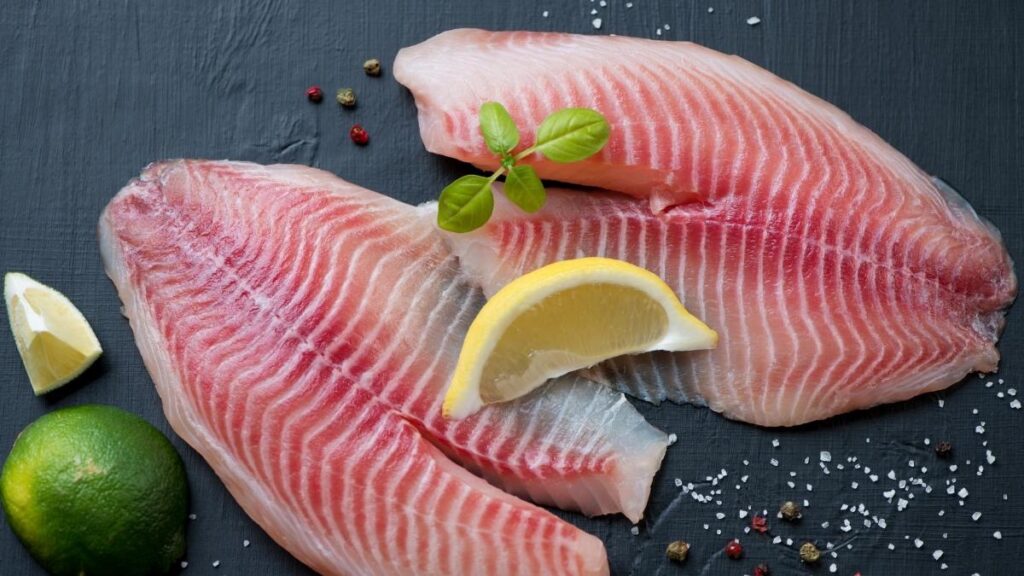Tilapia, a delectable and nourishing delight, has long been admired for its culinary merits. Yet, amidst its culinary charm, a cloud of misconceptions hovers, deterring many from experiencing its wonders. In the vast realm of online information, discernment is essential.
Hence, we embark on a quest to illuminate the obscure facets of Tilapia by addressing the most frequently posed queries. Here, we unravel the origins, cultivation methods, flavor profile, and the compelling reasons to incorporate this aquatic gem into your dietary repertoire.
The Authenticity of Tilapia Unveiled
Tilapia, an authentic aquatic entity, dispels the myth of being an artificial creation. Contrary to popular belief, this species is not a man-made marvel. While Tilapia is commonly cultivated in aquatic farms across the globe, its roots trace back to the cradle of nature in the Middle East and Africa. References to Tilapia can even be traced to the annals of ancient Egypt.
The Anatomy of Tilapia: Scales and Skeletal Secrets
Dispelling the notion of Tilapia as a “mutant fish,” it boasts the presence of both scales and bones, akin to its piscine counterparts. As history testifies, humanity has savored its bounties for centuries, attesting to its natural composition.
Navigating the Aquatic Realm: Tilapia’s Habitat
Tilapia is an inhabitant of freshwater domains, thriving in pristine sanctuaries such as streams, rivers, dams, and lakes that adorn our world. Although sporadic sightings occur in brackish waters resembling estuaries, such instances remain exceptional.
The Art of Tilapia Farming: A Journey Through Time
Remarkably, Tilapia’s journey as a farmed delicacy predates its surge in popularity in the United States during the early 2000s. Presently, Tilapia cultivation thrives within carefully constructed nets and enclosures adorning crystalline lakes. Here, these aquatic beings are nurtured on plant-based nourishment, while vigilant water quality monitoring safeguards their well-being.
Discerning the Origins: Certifications for Conscious Consumers
For the conscientious consumer concerned about the provenance of their piscine fare, a discerning gaze at grocery store labels suffices. Selecting fish reared under the finest conditions, exemplified by the likes of Regal Springs Tilapia, ensures the presence of certifications attesting to its pristine origins.
The Mercury Quandary: Tilapia’s Safety
Mercury contamination plagues several seafood varieties, including mackerel, marlin, tuna, and swordfish. Nevertheless, this conundrum should not deter seafood aficionados entirely. Opting for smaller species like Tilapia, characterized by lower mercury concentrations, remains a prudent choice. Furthermore, the preference for farm-raised fish may mitigate exposure to toxins and pollutants, offering a safer culinary journey.
Unveiling Tilapia’s Gastronomic Identity
Tilapia boasts a subtle and mildly sweet flavor profile, distinguishing it from its more assertive aquatic counterparts. This characteristic renders it a harmonious partner in culinary endeavors, readily complementing a myriad of ingredients, spices, and herbs. Its versatility in the kitchen encourages experimentation across various cuisines.
The Fountain of Health: Tilapia’s Nutritional Bounty
Tilapia emerges as a reservoir of protein and nutrients conducive to overall well-being, prominently featuring omega fatty acids. Among these, omega-3 stands out as a guardian against heart ailments and cerebrovascular events, fostering cognitive longevity. Additionally, Tilapia’s offering of lean protein, containing a mere gram of fat and a scant 90 calories per fillet, beckons those embarking on a weight management journey. Noteworthy among its nutritional assets is an abundance of phosphorus, bolstering skeletal health.
Culinary Versatility: Tilapia in the Kitchen
Tilapia’s culinary flexibility knows no bounds, accommodating a plethora of preparations. Whether baked, grilled, poached, or roasted, it consistently delivers delectable results. It finds a home in dishes as diverse as fishcakes, soups, casseroles, and barbecue skewers. Elevate your salads by adorning them with this aquatic jewel. Seek inspiration from our treasure trove of recipes to embark on a gastronomic odyssey with Tilapia as your guide.

Seafood by Season in North Carolina
In the coastal haven of North Carolina, the abundance of seafood is a treasured legacy. The bountiful waters offer a diverse array of delectable marine delights, each with its own season of prime freshness. Here, we dive into the seasonal symphony of seafood, pairing it with the previously discussed Tilapia to create a harmonious culinary tapestry.
Spring: Crabs and Tilapia Delights
As the chill of winter recedes, spring heralds the arrival of blue crabs along the North Carolina coast. These succulent crustaceans are best savored from March to May. Pairing them with Tilapia fillets in your culinary creations promises a delightful fusion of flavors and textures.
Summer: Shrimp Extravaganza
The summer sun brings forth an abundance of shrimp in North Carolina’s waters. From June to August, these sweet and tender treasures are at their peak. Complementing your Tilapia dishes with freshly caught shrimp elevates your summer dining experience to new heights.
Autumn: Oysters and Tilapia Fusion
As the leaves change color, oysters come into season along the coastlines of North Carolina, with their prime from September to November. Combining the delicate taste of oysters with Tilapia in your recipes unveils a captivating fusion of flavors that epitomizes the essence of fall.
Winter: Savoring Tilapia
During the winter months, while some seafood takes a seasonal hiatus, Tilapia remains a constant delight. Its mild and versatile nature makes it a year-round staple, providing a reliable source of culinary inspiration even as the seasons change.
Let’s sum it up
In conclusion, our exploration of Tilapia has unraveled its enigmatic allure, dispelling misconceptions and celebrating its authenticity as a versatile and nutritious aquatic gem. As we delved into its origins, culinary potential, and health benefits, Tilapia emerged as a culinary canvas waiting to be adorned with the flavors of each season along the North Carolina coast. From the succulent blue crabs of spring to the sweet summer shrimp, the autumn oyster harvest, and the year-round appeal of Tilapia, this coastal culinary journey invites you to savor the bounty of the sea. So, whether you’re a seasoned seafood enthusiast or a curious epicurean, let the mysteries of Tilapia and the seasonal seafood treasures of North Carolina guide your culinary adventures.
